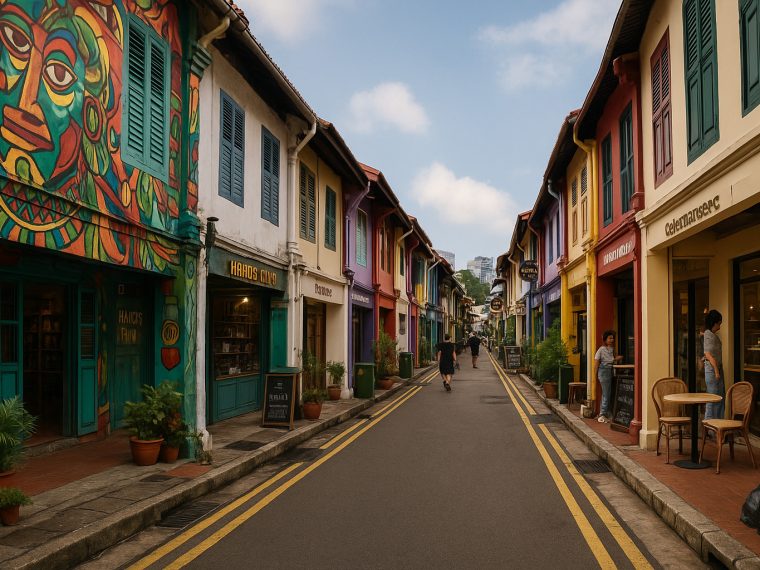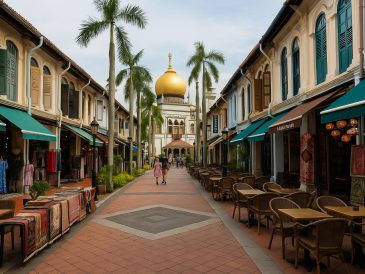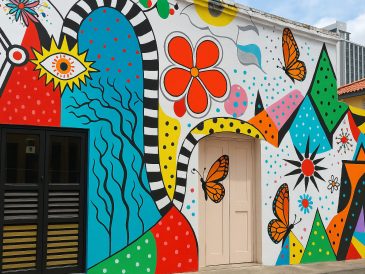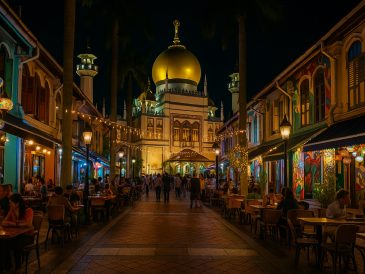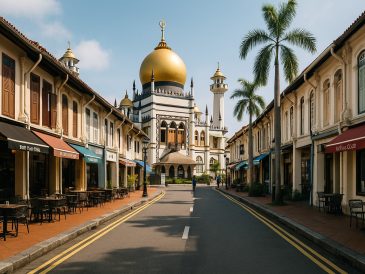Haji Lane doesn’t announce itself with grandeur. It hides between the wider streets of Kampong Glam, its entrance modest but magnetic. For those who ask why this particular alley draws locals and tourists alike, the answer lies in its layers—of history, of graffiti, of old shophouses reborn with color and commerce.
A History Etched in Pilgrimage
Long before murals and lattes, Haji Lane served a very different purpose. In its earliest days, it was a working lane—functional, not fashionable. Arab pilgrim-brokers used it as a base to help Muslims prepare for the Hajj. The shophouses lining the street housed those in transit, the spiritual journey to Mecca starting in the heart of Singapore. Through the 1960s and 70s, the area became home to poor Malay families, with many of the buildings later abandoned or used for storage.
Then came the 2000s. What was dormant sprang back to life—not from large developers, but from small independent efforts. Artists, designers, and small business owners planted roots. Color returned to the shutters and walls. Indie commerce became the heartbeat. That transformation turned Haji Lane into a reference point for self-made culture in Singapore.
The Street as a Canvas
One walk down Haji Lane feels like flipping through a street artist’s sketchbook—except life-sized. Murals creep along walls, peek out from corners, and wrap around backdoors. The art ranges from abstract bursts of color to figurative pieces with cultural themes.
Among the most photographed is the Aztec-style mural sprawling across the rear of Piedra Negra. It’s large, bold, and unmissable. Other works, including glowing night murals and contributions by Ernest Zacharevic, layer depth into the visual identity of the lane. Every turn reveals a different mood.
Graffiti isn’t just tolerated here—it’s foundational. These visuals speak louder than marketing banners. They reflect the city’s multicultural rhythm and the artists who pass through or call it home.
Independent Finds: The Retail Pulse
Shopping on Haji Lane isn’t about mass brands or retail chains. This is the territory of vintage jackets, handmade earrings, and curated oddities. Whether you’re after a cassette-era film camera or a tie-dye hoodie stitched from deadstock, chances are a small shop has it.
Some standout options include:
- Vintagewknd – Specializing in upcycled and throwback fashion.
- Hands on Film – For collectors of analog photography gear.
- Musicology Records – Home to vinyl records and music culture ephemera.
Each storefront presents a distinct aesthetic, often matched by equally individual interiors. These shops aren’t just selling products; they represent personal visions. For more, explore this guide to Haji Lane boutiques.
Food That Matches the Street
Cafes and eateries on Haji Lane don’t settle for generic menus. The flavors range wide—from Middle Eastern shawarma to Mexican quesadillas and Korean desserts. Most seating spills outdoors, often shared with street musicians, visiting artists, and Instagrammers shooting murals mid-bite.
Popular spots include:
- Coffee Donkee – A Japanese-style café with minimal interiors.
- Cafe Margaret – Serving Korean-style cube bread and creamy drinks.
- The French American Bakery – A small space with croissants worth queuing for.
- Piedra Negra – Known for tacos, margaritas, and its large back mural.
- Squisito – Serving Italian fare in a casual setting.
- Moosh SoftServe – Famous for soft-serve ice cream with creative toppings.
- Gelato Garden – An artisan spot offering unique gelato flavors.
The street caters to no single cuisine. Instead, it mirrors the neighborhood’s global character.
Nightfall and Bar Lights
As sunlight fades, the tempo of Haji Lane doesn’t slow. It shifts. The boutiques lock up. The bars take over. Music grows louder, chatter mixes with ice cubes clinking in highball glasses, and chairs gather outside under fairy lights and neon signs.
Highlights include:
- Good Luck Beerhouse – Craft beers with dim sum pairings.
- Bar Stories – One of Singapore’s earliest bespoke cocktail bars.
- Blu Jaz Cafe – A venue that blends food, drinks, and live jazz.
- Black Sheep & Co. – A laid-back bar popular with travelers on a budget.
The nightlife here isn’t about volume or pretension. It’s about a low-rise, high-energy atmosphere where locals and tourists blur.
More Than Just a Lane
Haji Lane is part of the larger Kampong Glam district. While the lane commands attention with its style and energy, the surrounding streets offer a deeper look into Malay and Arab heritage. The Sultan Mosque looms just a few steps away—its golden dome impossible to miss. Arab Street tempts with perfume oils, traditional textiles, and Persian carpets. The Malay Heritage Centre adds context with its exhibitions and architecture.
For those planning a visit:
- Best time to go: Weekdays or early evenings to avoid crowd congestion.
- MRT access: Bugis Station is the closest stop.
Why It Matters
Haji Lane isn’t curated by a committee or built from a blueprint. It grew from a combination of need, neglect, and reinvention. The same buildings that once housed pilgrims now serve matcha lattes. The walls that faded with rain now host glowing paint. The street doesn’t try to be perfect. It changes with every shopfront and mural update, every entrepreneur who moves in with an idea.
Its energy lies in the way history, commerce, art, and food all coexist without erasing each other. Haji Lane is small, but it holds more identity per meter than many boulevards. It’s not trying to be anywhere else. And that’s what makes it worth the walk.
